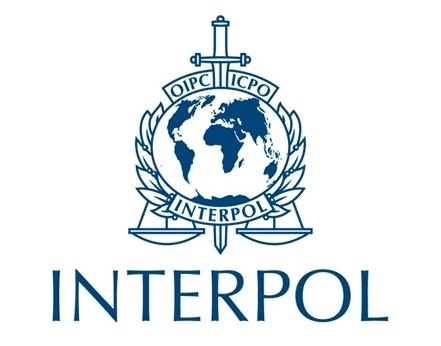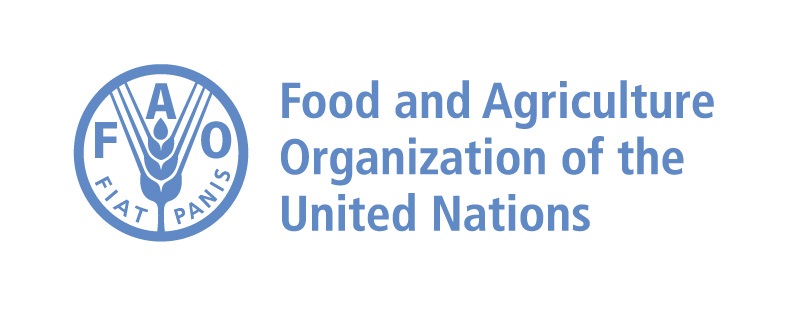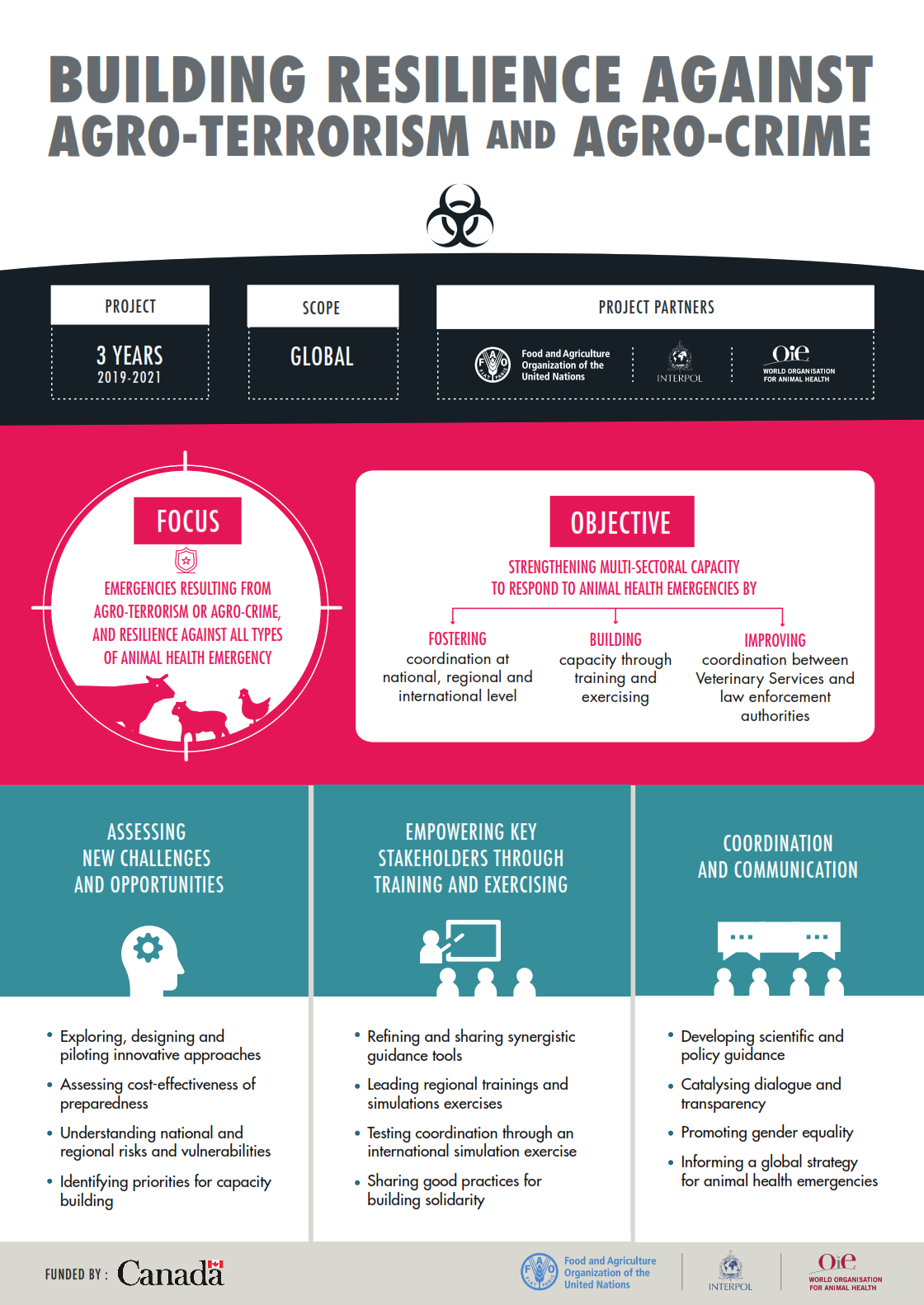INTERPOL
FAO
World Organisation for Animal Health (WOAH)
There are numerous historic and recent examples where bioweapons have been used, threatened for use, or developed for use against livestock (for agro-terror, agro-warfare, or agro-crimes depending on the intent). Parts of the world are at risk from agro-terrorism owing to their vulnerability (susceptible human and animal populations with weaknesses incapacity to respond to a disease outbreak); threats from criminal and terrorist groups and civil unrest; and the potential consequences of a deliberate release of a pathogen into an animal population (impacts on animal health, food security, public health, civil stability, livelihoods, and economies). Even the threat of an agro-terror or bio-terror attack can be enough to create panic and civil unrest. Since most pathogens that have been used or considered for use as bioweapons (against humans, animals, or both) have been animal pathogens (including zoonotic agents), the veterinary services, working closely with their law enforcement colleagues, have an important role to play in threat reduction. With greater numbers and more rapid movements of animals and people than ever before, infectious diseases can be disseminated more easily across larger areas and uncontained disease events in one region can soon become international crises.
Interagency Cooperation Building Resilience Against Agro-Crime Affecting Animal Health
The introduction, whether deliberate or accidental, of pathogenic animal biological agents and their subsequent effects, is an important threat to which many countries lack the capacity to prepare and respond. The deliberate use of these pathogens can be referred to as ‘agro-crime.’
Because most pathogens candidate for agro-crime use is animal disease agents, veterinary services have a significant role to play in capacity building and threat reduction. National veterinary services, working in close cooperation with their law enforcement counterparts, should plan, prepare, and help their country to respond to agro-crime incidents at the national level. Regional cooperation and harmonization could then improve the efficiency of these national measures.
‘Building resilience against agro-crime affecting animal health’ is a project funded by Global Affairs Canada and implemented by the WOAH-INTERPOL-FAO consortium. This project aims to sustainably build global and regional capacities to respond to animal health emergencies resulting from the intentional release of pathogenic animal biological agents. This project intends to strengthen collaboration between veterinary services and law enforcement authorities. It seeks to better assess current gaps in capacity by exploring the drivers for investing in an emergency management capacity, including how benefits of such investment may vary between countries and between various sectors.
PHASE I ASSESSMENT
The initial phase of the project will begin with a global assessment of the present capabilities of countries to address issues related to agro-crime events and their consequences. The overarching legal framework that would allow the implementation of identified measures to improve surveillance and response will be considered.
PHASE II TRAINING
Relevant training will then be implemented to build or reinforce existing capacities on surveillance, early warning, alert, and response to different biothreats. (GEMP, SOPs, etc.)
PHASE III
Simulation exercises organized within and among target regions will then test the identified solutions and the response capacities in order to take this strategy a step further.



